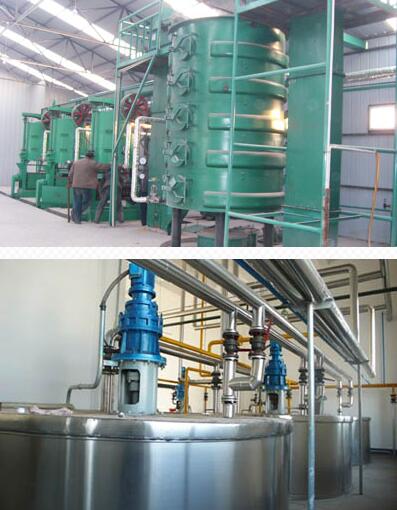Canola oil processing is a complicated process. Following preconditioning, canola seeds are next crushed and flaked before being heated slightly. These processes help to maximize oil recovery. The canola flakes are then “prepressed” in screw presses or oil expellers to reduce the oil content from about 42% in the seed (on an 8% moisture basis) to between 16-20%. Screw pressing also compresses the flakes into more dense cakes (called “press cake”) which facilitates oil extraction.
Cleaning Section of the Canola Oil Processing Plant
Graded seed is cleaned by a number of different methods including air aspiration, indent cylinder cleaning, sieve screening, or a combination of these. Cleaning ensures that the seed is free of extraneous plant and other foreign material which is referred to in the industry as “dockage”. Seed generally contains less than 2.5% dockage following the cleaning process. Seed that has been cleaned is ready for subsequent export or for crushing into canola oil and meal.
Preconditioning Section of theCanola Oil Processing Plant
Seed which will be processed for oil and meal is preconditioned using mild heat treatment, and moisture is then adjusted to improve subsequent oil extraction.
Extraction Section of the Canola Oil Processing Plant
Press cake which results from seed processing is next subjected to one of two types of oil extraction to remove much of the remaining oil. Oil may be extracted using either hexane (“solvent”) extraction or by “cold-pressing”.

